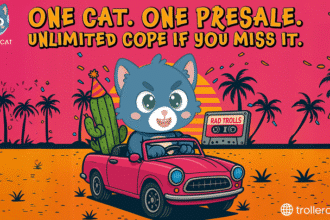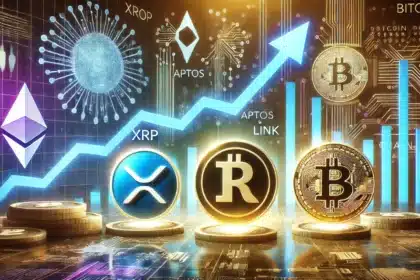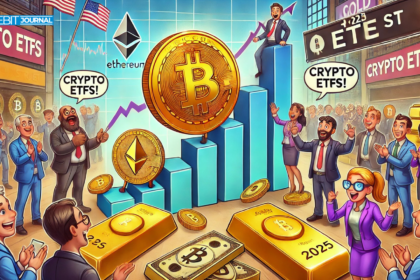Ripple is making high strides into the future of institutional finance with RLUSD, its enterprise-grade stablecoin that is rapidly gaining traction across traditional finance and decentralized ecosystems.
As real-world asset (RWA) tokenization emerges as one of the most transformative trends in Web3, Ripple’s RLUSD is positioning itself as a key driver of that evolution, backed by strategic partnerships, regulatory confidence, and tangible utility on the XRP Ledger (XRPL).
RLUSD: A New Chapter for Stablecoins in Institutional Finance
Launched in December 2024, RLUSD is Ripple’s response to the growing demand for USD-backed digital assets with regulatory clarity and institutional-grade transparency. The stablecoin is fully collateralized by U.S. dollar deposits, short-term government securities, and cash equivalents, ensuring it maintains a 1:1 peg while serving as a reliable tool for enterprise-grade use cases.
RLUSD isn’t just another stablecoin in a crowded market. It has already been integrated into Ripple Payments, the company’s cross-border payments platform, streamlining real-time settlements and improving liquidity provisioning for financial institutions.

According to data from Cryptoslate, RLUSD’s market capitalization has soared by over 118% month-over-month in early 2025, reaching nearly $200 million by March. This momentum highlights growing adoption among institutional players, especially as the stablecoin is increasingly used as collateral for tokenized assets and decentralized finance (DeFi) protocols built on XRPL.
Ripple’s Tokenization Strategy: Partnerships, Scale, and Trust
Ripple’s ambition doesn’t stop at enabling payments. The company is targeting the $18.9 trillion RWA tokenization market projected by 2033, as forecasted in a joint report with Boston Consulting Group.
To bring this vision to life, Ripple has secured key partnerships with regulated financial institutions like Archax, with plans to tokenize hundreds of millions of dollars worth of RWAs onto XRPL. The underlying goal is to transform illiquid traditional assets into digitally tradable instruments that can be exchanged, collateralized, or fractionalized in global markets.
The recent acquisition of prime broker Hidden Road for $1.25 billion further strengthens Ripple’s position. The integration of RLUSD into the brokerage’s infrastructure opens new avenues for its use as collateral across a broader range of institutional financial products. This acquisition enhances Ripple’s ability to offer end-to-end services, from tokenization to execution and settlement.

Institutional Onboarding and Exchange Listings
Ripple has prioritized making RLUSD accessible to both retail and institutional investors, securing listings on major exchanges including Kraken, Bitstamp, and LMAX Digital. These platforms offer deep liquidity, institutional custody solutions, and global reach, key factors that help build trust around the asset and expand its real-world use cases.
This accessibility enables enterprises and DeFi developers alike to leverage RLUSD for everything from tokenized real estate transactions to automated collateral management in smart contracts.
Bridging TradFi and Blockchain With Real Use Cases
The underlying XRPL infrastructure gives RLUSD a unique advantage. With its proven scalability, native support for tokenization, and compliance-focused design, XRPL ensures that RLUSD functions efficiently even under high-volume conditions.
Ripple’s ongoing collaborations with banks, regulators, and asset managers demonstrate the increasing convergence of traditional finance and blockchain. Projects are already underway to tokenize bonds, private equity, and commodities, with RLUSD acting as the settlement layer.
As Ripple’s Head of Payments Strategy noted,
“RLUSD isn’t just a product, it’s a pathway to institutional-grade blockchain adoption. Real-world assets are coming to XRPL, and RLUSD will be the medium of that transformation.”
Real-World Asset Tokenization: A Trillion-Dollar Opportunity
Tokenizing RWAs involves converting physical or traditional financial assets into blockchain-based tokens, such as real estate, equities, or treasury bills. This process enhances liquidity, simplifies transfers, and enables global fractional ownership.
Boston Consulting Group projects that the market for tokenized RWAs will skyrocket from $0.6 trillion to nearly $19 trillion by 2033, driven by regulatory evolution, demand for efficiency, and increasing trust in blockchain infrastructure.
Ripple’s foresight in deploying RLUSD at the core of this shift demonstrates technological leadership and strategic timing as traditional finance accelerates toward tokenization.
Conclusion
Ripple’s RLUSD is no longer just a stablecoin, it is a strategic asset transforming how value is stored, transferred, and collateralized in both traditional and decentralized finance. With institutional partnerships, regulatory alignment, and deep integration into XRPL, RLUSD is unlocking the next generation of tokenized financial infrastructure.
As the world prepares for the mainstream arrival of real-world asset tokenization, RLUSD is quietly becoming the foundation upon which this trillion-dollar revolution will be built.
FAQs
What is RLUSD by Ripple?
RLUSD is Ripple’s USD-backed stablecoin, launched in December 2024. It’s designed for institutional-grade use, offering real-time settlements and serving as collateral in tokenized asset transactions.
How is RLUSD used in real-world asset tokenization?
RLUSD facilitates the buying, selling, and collateralizing of real-world assets (RWAs) on the XRP Ledger, enabling efficient settlement, liquidity, and fractional ownership.
Is RLUSD available on major exchanges?
Yes. RLUSD is listed on platforms like Kraken, Bitstamp, and LMAX Digital, providing access to institutional and retail investors worldwide.
Glossary of Key Terms
RLUSD – Ripple’s enterprise-grade, USD-backed stablecoin designed for payments and asset tokenization.
Stablecoin – A cryptocurrency pegged to a stable asset, such as the US dollar, to reduce volatility.
Tokenization – The process of converting real-world assets into digital tokens on a blockchain.
Real-World Assets (RWAs) – Physical or traditional financial assets such as real estate, bonds, or equities that are represented digitally on a blockchain.
XRP Ledger (XRPL) – Ripple’s decentralized blockchain platform that supports fast, low-cost transactions and asset tokenization.
Collateral – An asset pledged to secure a loan or financial obligation, often used in DeFi and brokerage products.
Institutional Finance – Financial services or products designed for large organizations, banks, and investment firms rather than individual retail users.
Liquidity – The ease with which an asset can be bought or sold without affecting its price.





























